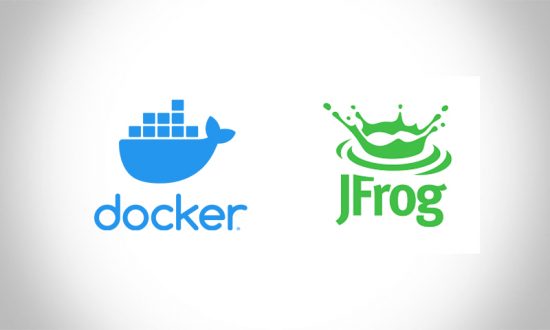Docker Partners with jFrog To Simplify DevOps Processes
The use of containers in enterprise application development and deployment have become more popular than ever before. And leading the containerization revolution of DevOps app development is Docker. And to no surprise in the DevOps world, Docker has teamed up with jFrog to simplify DevOps processes.
Docker and Docker registries giantjFrog, have officially partnered, giving developers with jFrogartifactory repository access to Docker software for powerful scalability. Now developers can manage container images, software artifacts, and Helm charts utilizing jFrogartifactory repository and Docker.
The Docker and jFrog partnership paves a new path for a single delivery chain and entry to cloud-native pipelines. Technology companies and their DevOps teams can now enhance app development and deployment security via container images while serving up a consistent DevOps experience for users.
DevOps Utilizing JFrog Now Have Access To All Docker Images
The partnership empowers DevOps teams to build applications with peace of mind that all software components, like container images, are hosted in a very secure repository. And the Docker image rate limits have been lifted for all jFrog users.
This is a game-changer for DevOps. Utilizing containers to develop and deploy apps has always hinged on security and quality of content. What’s the risk? With security a major issue in today’s digital age, the Docker and jFrog partnership exemplifies accessibility with security of development and deployment a top priority.
The availability of Docker and Docker Hub images without rate limits simplifies and secures DevOps processes for all future builds. And DevOps teams get access to Docker Verified Publishers.
Emphasis On App Development Security Eases Entry For DevOps Teams
Security is a big-time issue when it comes to app development, especially for enterprise companies with plenty to lose. For instance, tech company, Garmin, was infiltrated by hacker group Evil Corp, and held the company’s data ransom for $10 million. Garmin was said to have paid the ransom.
This hack of a very well-known tech company is a call to action for greater security when app development is concerned. Like in the case of SQL injection. SQL injection can allow cybercriminals in and expose company data and sensitive information, like the Garmin hack.
Greater development security, especially when it comes to container image use, must be at the forefront. The Docker and jFrog partnership has made security a larger part of DevOps processes in a way.
There is certainly pressure on developers to secure all software builds in order to reduce the risk of cyber-attacks and security breaches. Identifying vulnerabilities in application development as early as possible can prove beneficial. Developers can now make this happen with Docker and jFrog working in tandem.
Partnership Is A Big Win for Enterprise Companies Utilizing Containerized Application Software
Enterprise companies will win big with the newly found partnership between Docker and jFrog. Especially for enterprise companies with containerized image use and legacy apps in place. In many ways, the platform was built to suit enterprise growing needs.
What’s in it for Docker? Now Docker has access to more enterprise DevOps teams that have already utilized containerization in app builds via jFrog artifact repository. This means a larger customer base for Docker with easy consumption and unlimited Docker access for developers using jFrog.
It is critical to have access to container images were they were created in the first place. The newly crafted partnership ensures that developers for enterprise companies get a full-suite, end-to-end solution for container app development and frictionless builds.
This is evident in the first stage of the partnership rollout, allowing developers and DevOps teams to access and work with artifactory and Docker more effectively. For instance, once images are in place via Artifactory, DevOps teams can take Docker container images from development to deployment in a production environment.
Why Containers And Container Registry For Enterprise Companies?
Utilizing container registry within your application development and deployment pipeline can increase app development productivity. This has massive monetary benefits for enterprise companies, especially since the resources needed to access containerization is relatively low compared to the benefits.
Benefits for utilizing container registry include:
- Virtualization during app builds and deployment is eliminated
- Containers serve up higher levels of security
- Time to market on application builds are shortened
- Problems can be identified faster in development process
- DevOps team collaboration becomes easier
- Automation becomes a part of app development process
- Application deployment is faster and more secure
With a collection of container images, or containerized files in your registry, you have a more powerful, and more secure way to develop applications utilizing containers and native cloud technology. Images are stored in a secured place via Docker and jFrog artifact repository, a must for DevOps app security.
In Conclusion . . .
The latest partnership between Docker and jFrog is welcomed and needed news for enterprise DevOps communities and development professionals. Now there are more ways to access secure containers without the limitations as before. How will you utilize antifactory and containerization with your enterprise company
